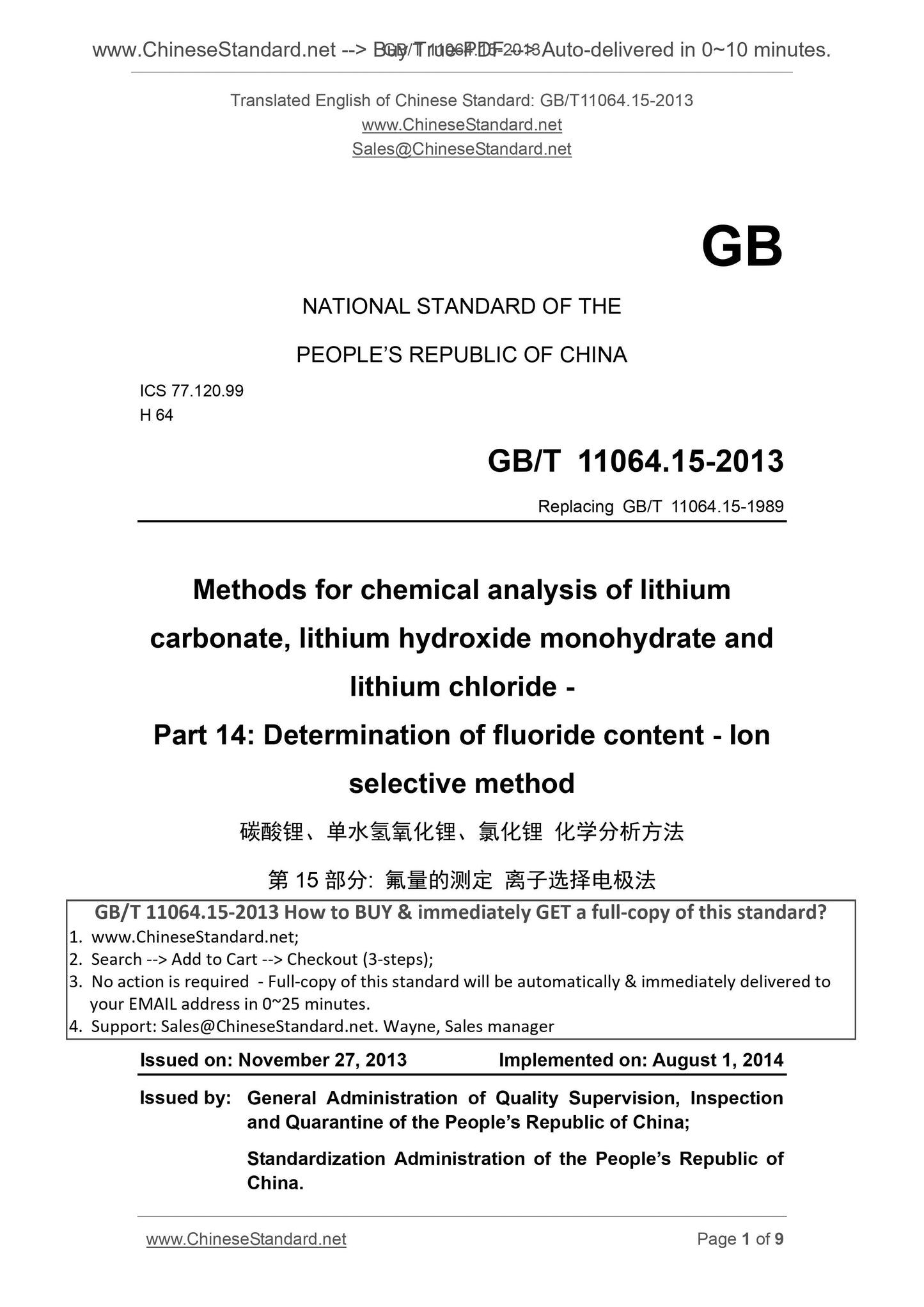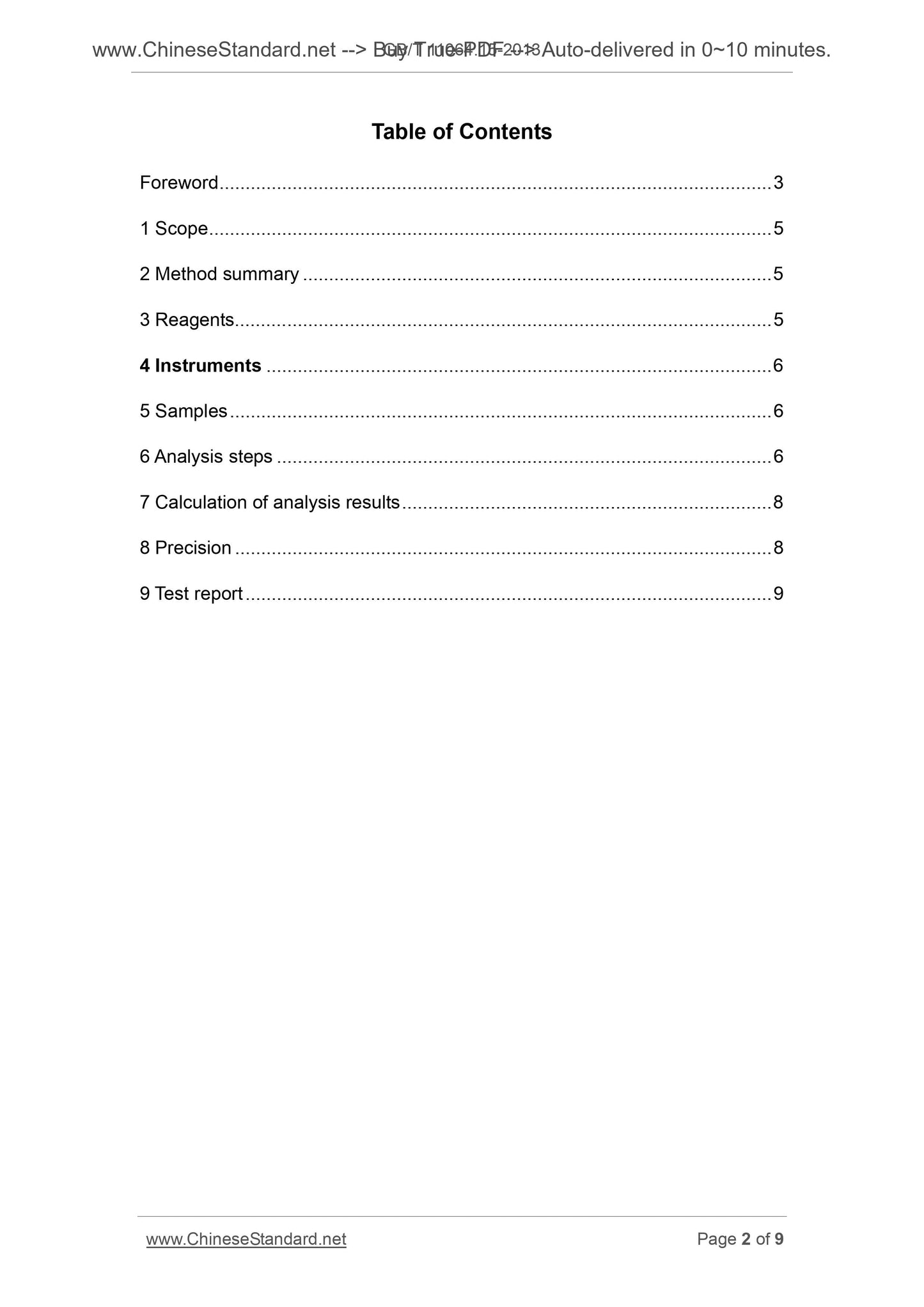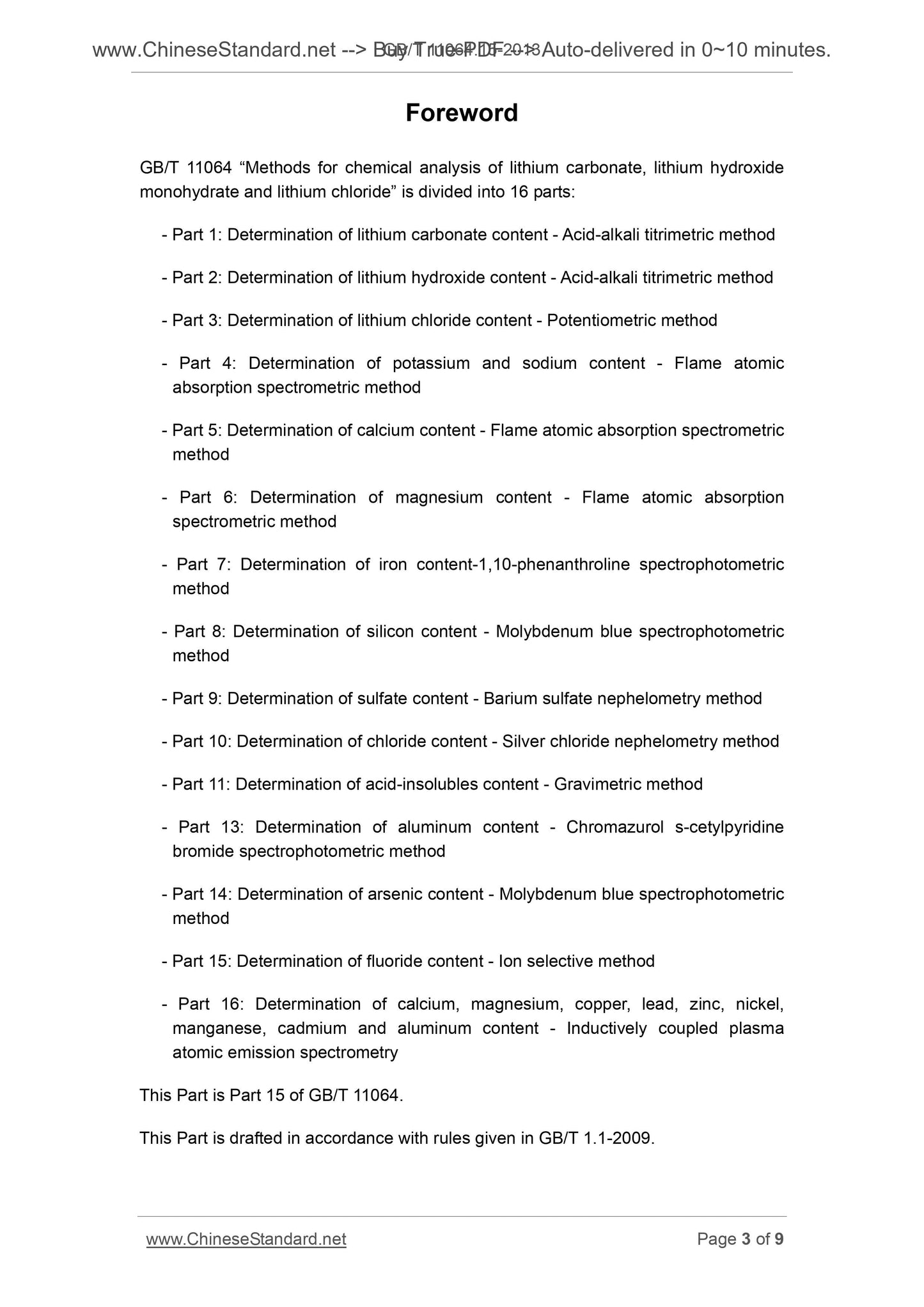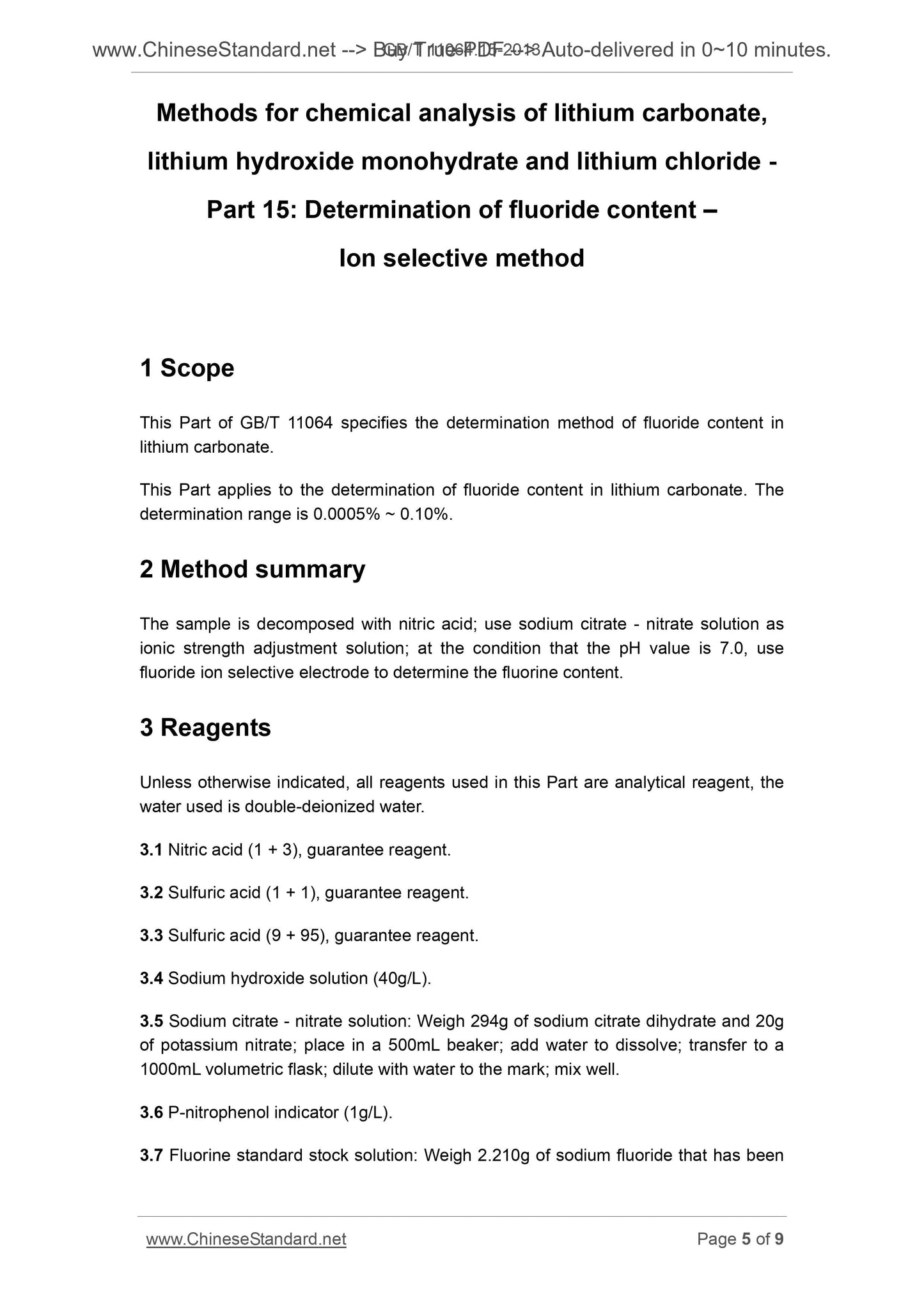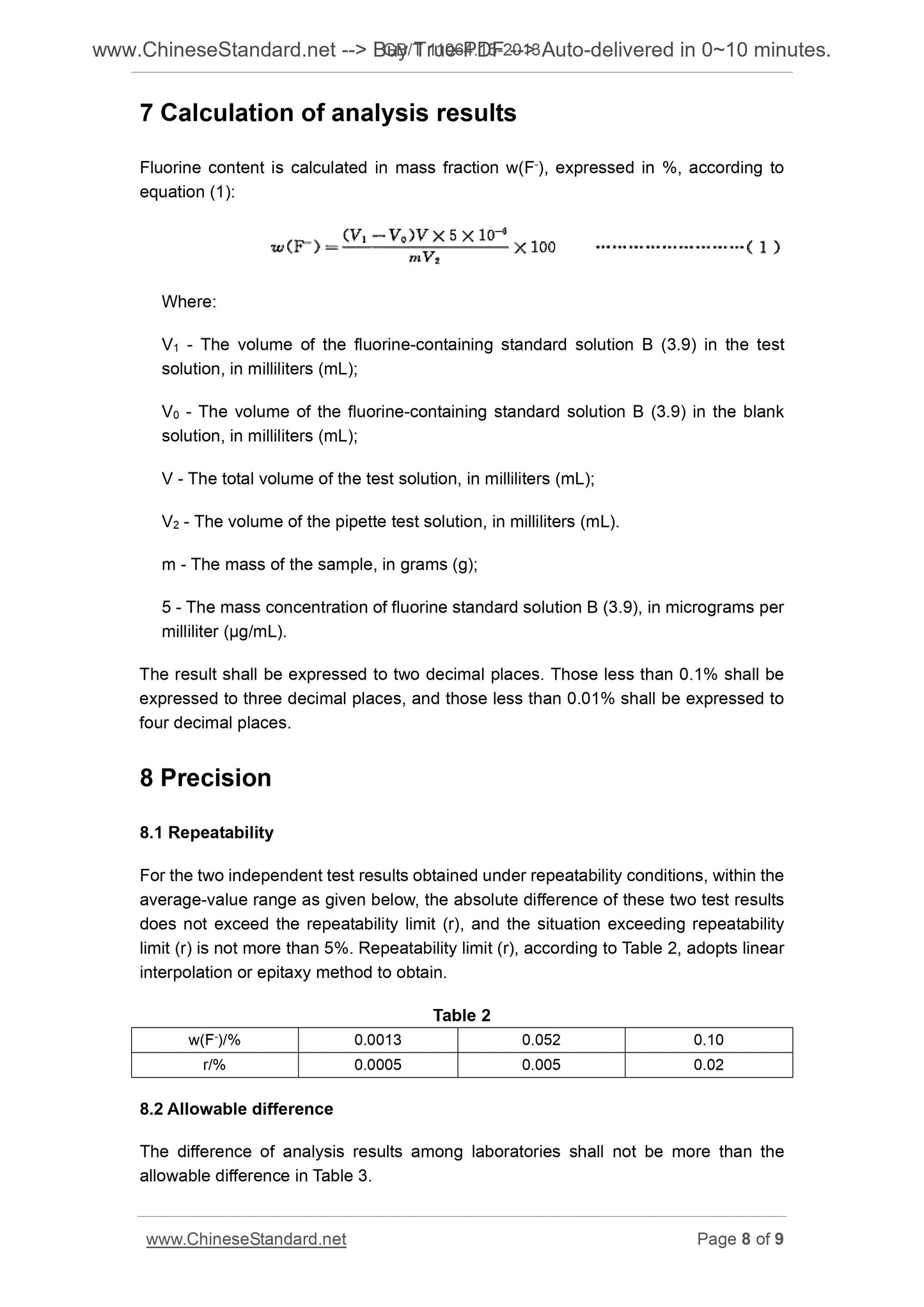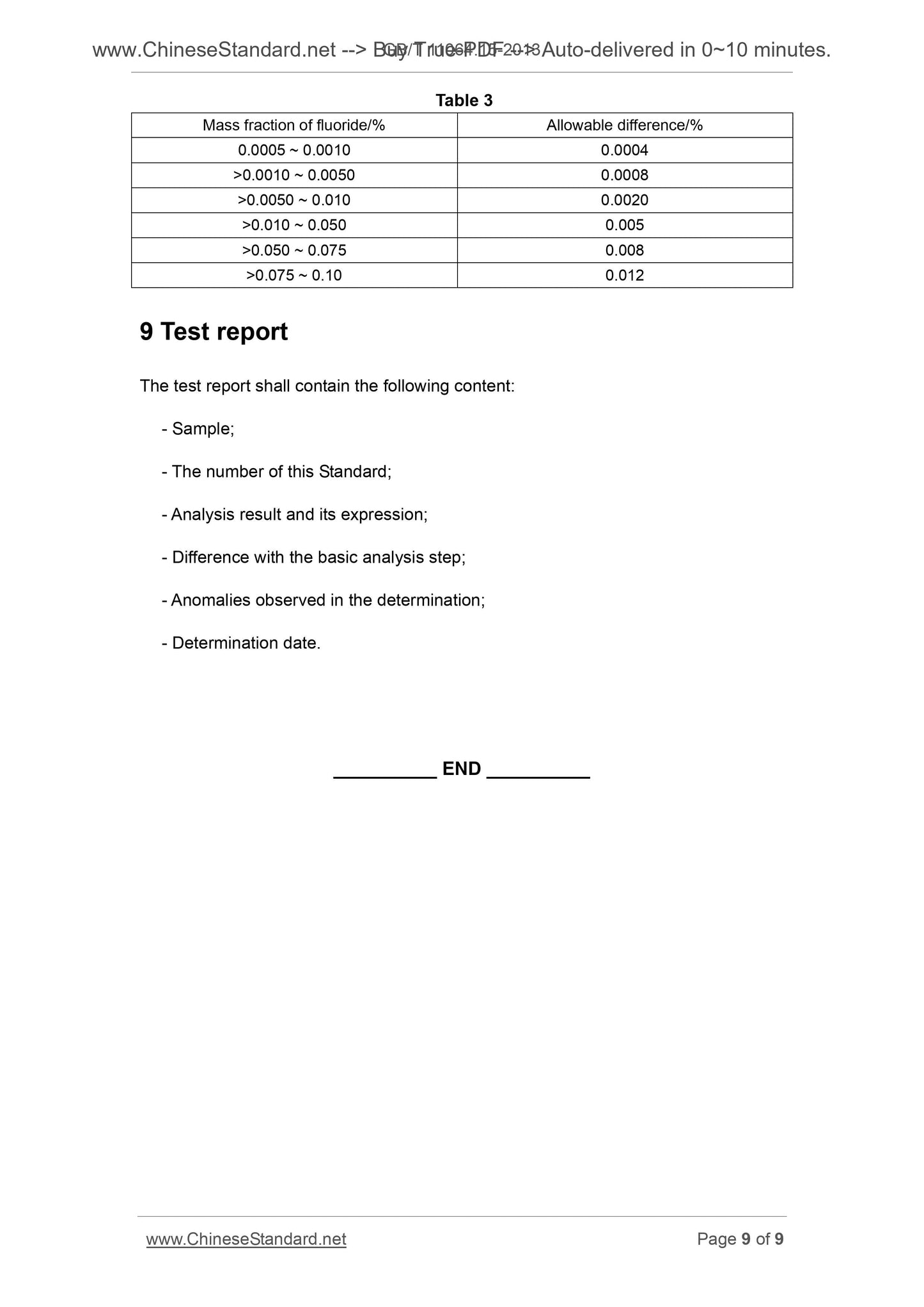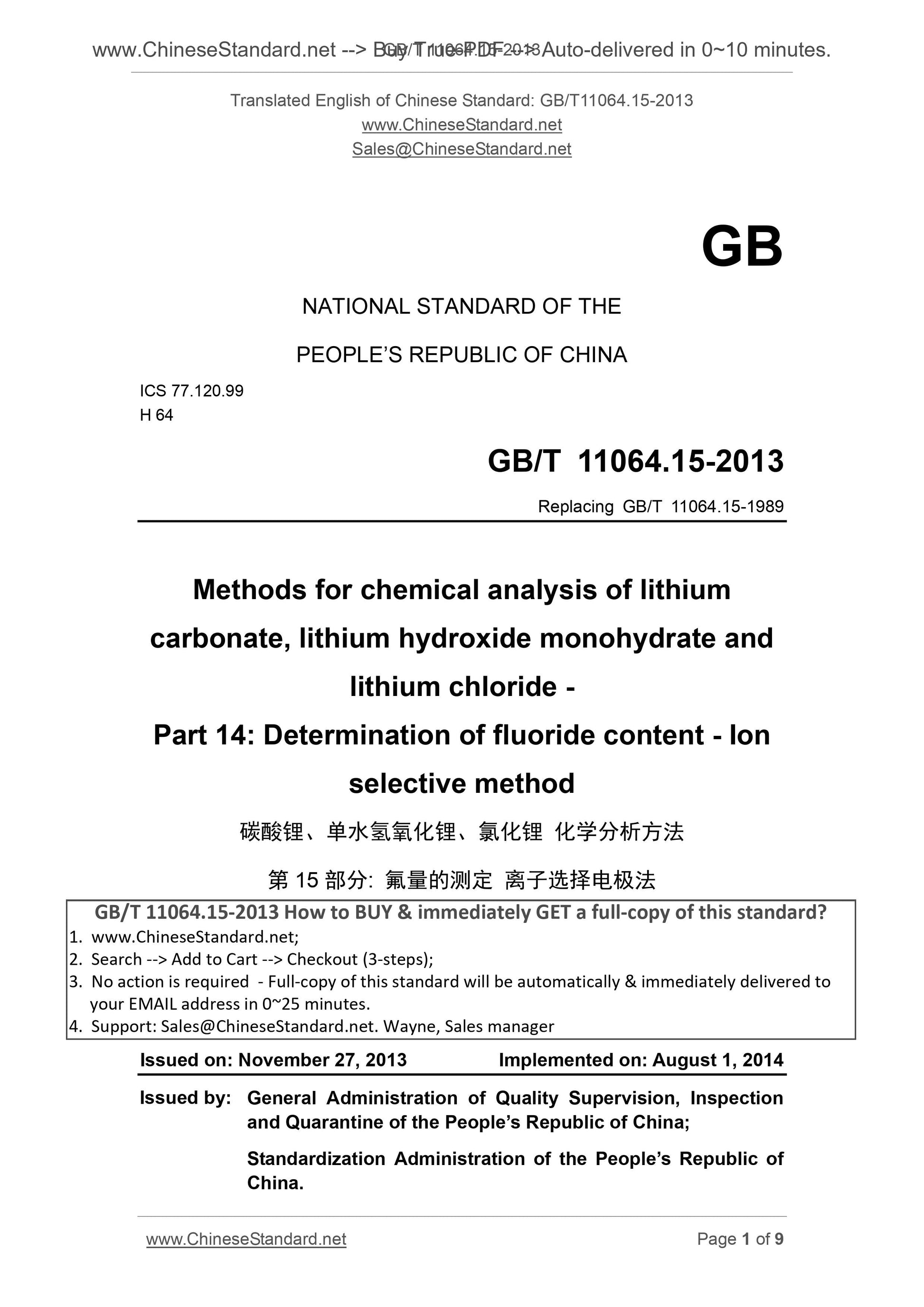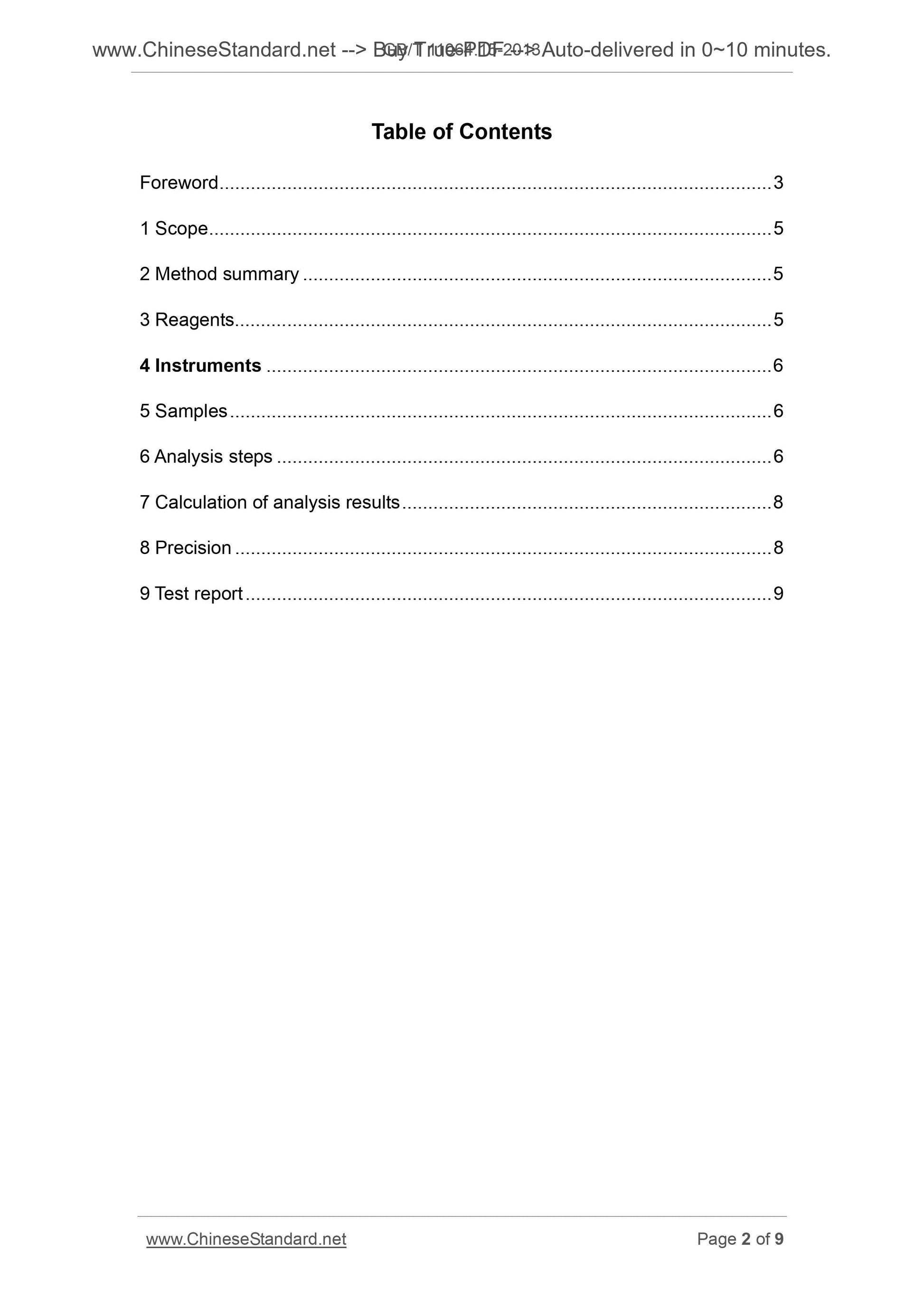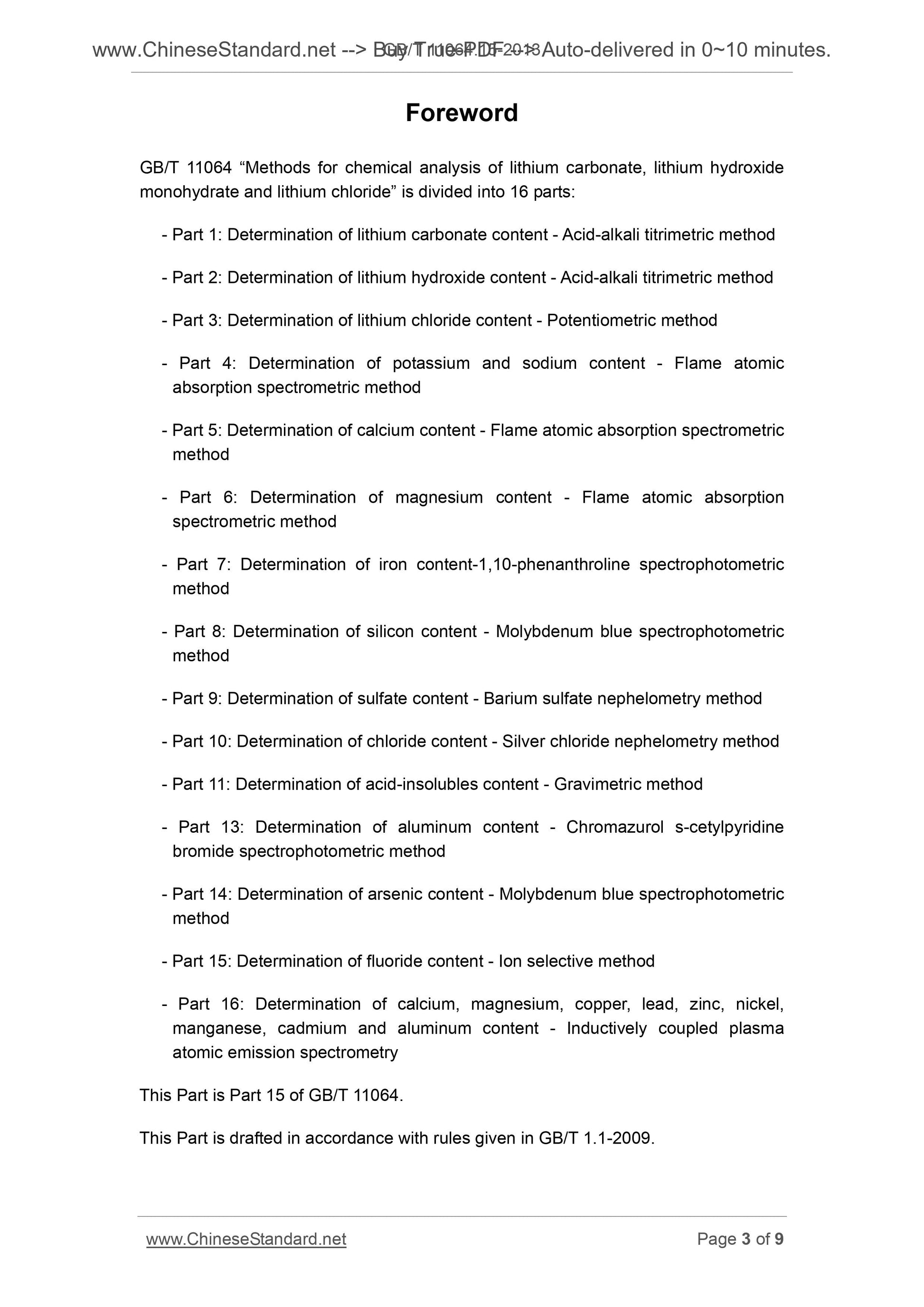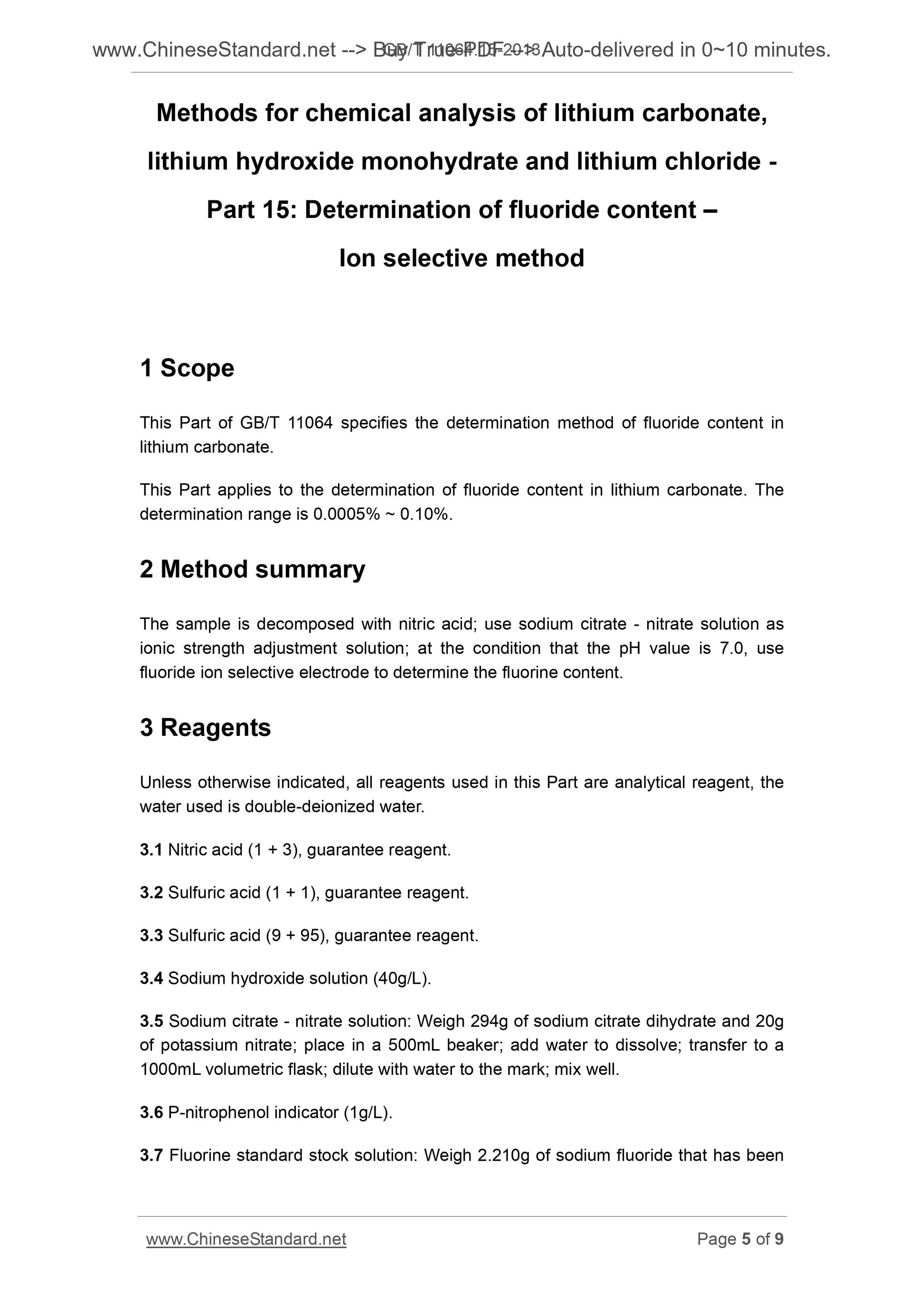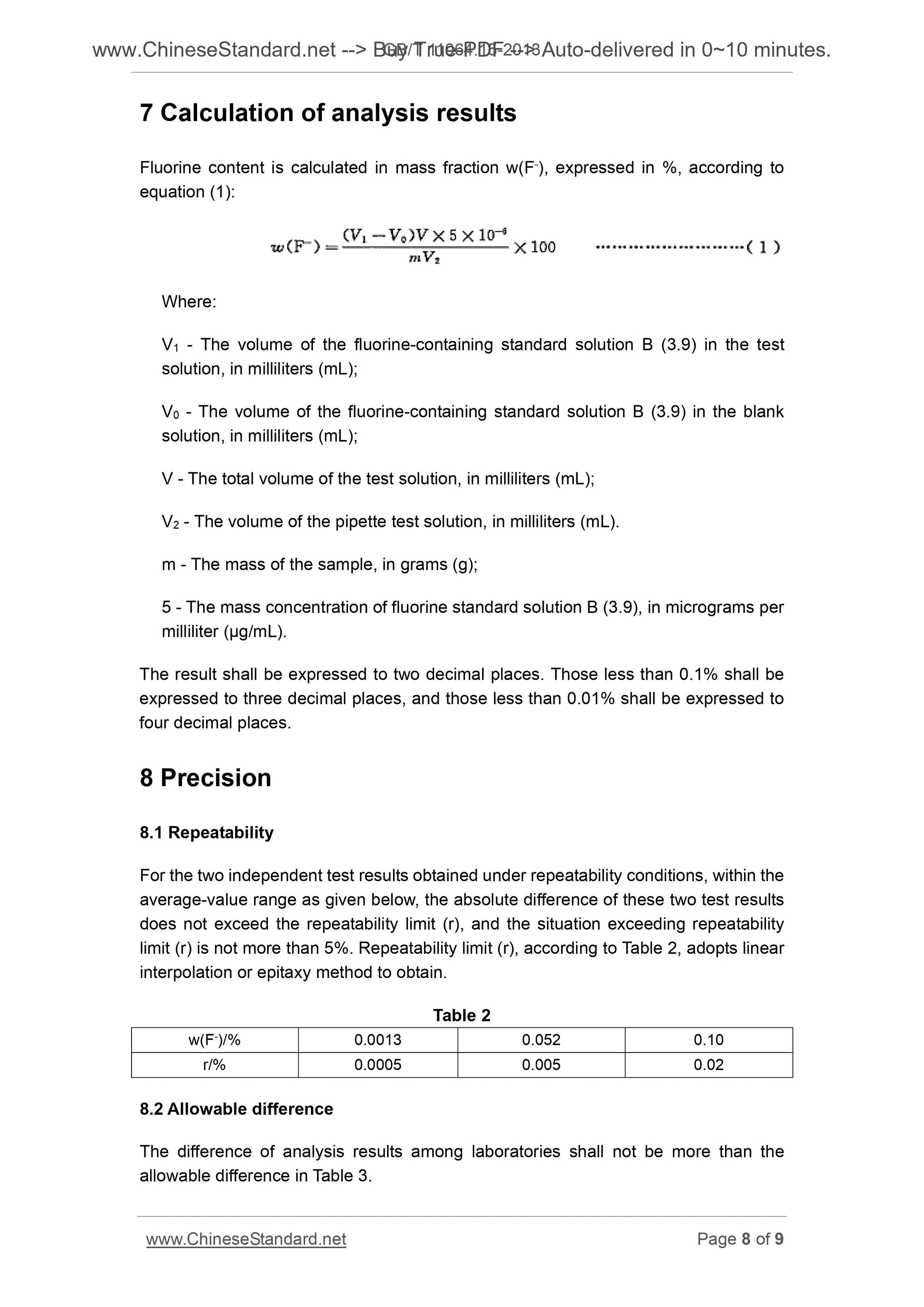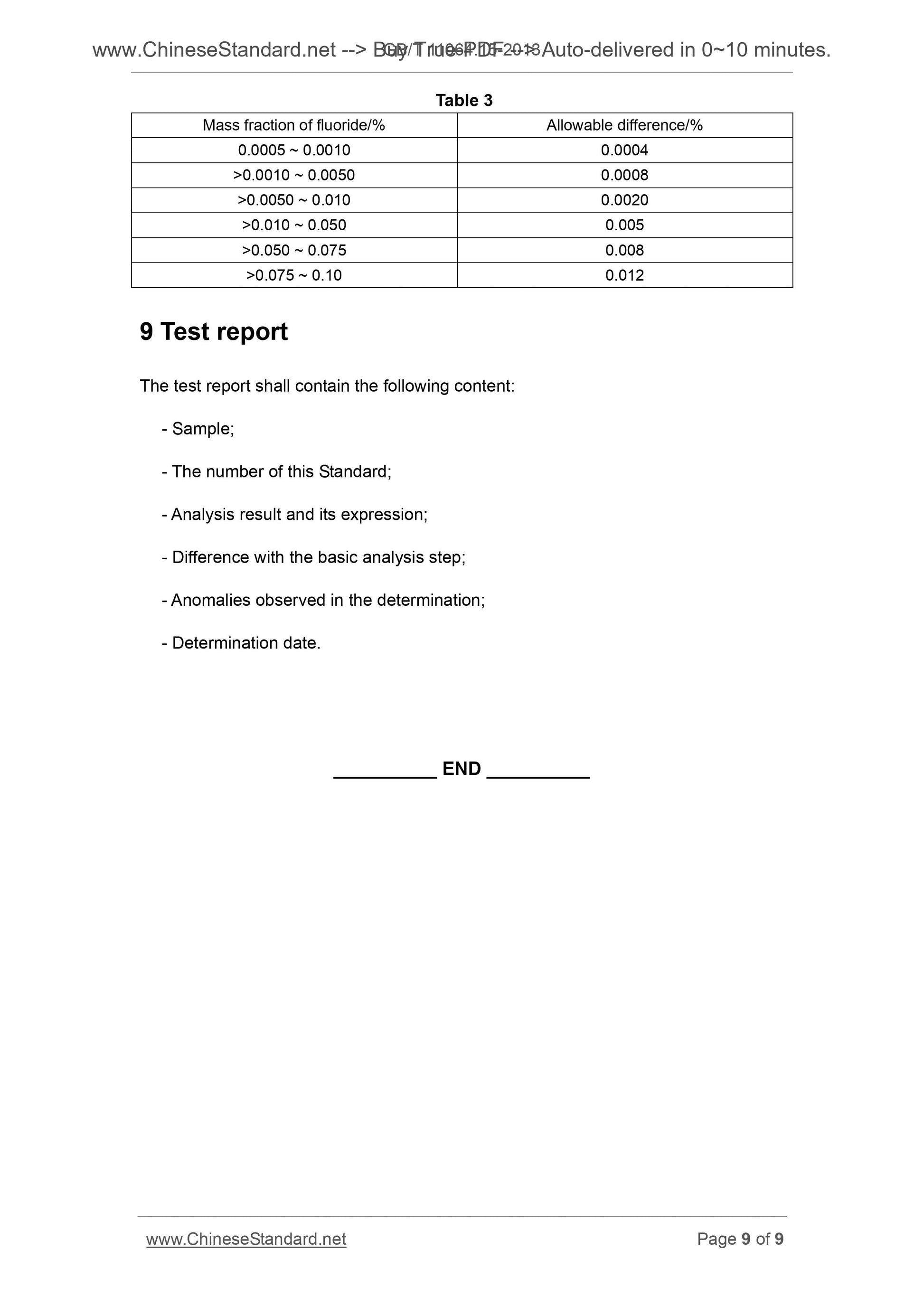1
/
of
6
www.ChineseStandard.us -- Field Test Asia Pte. Ltd.
GB/T 11064.15-2013 English PDF (GB/T11064.15-2013)
GB/T 11064.15-2013 English PDF (GB/T11064.15-2013)
Regular price
$90.00
Regular price
Sale price
$90.00
Unit price
/
per
Shipping calculated at checkout.
Couldn't load pickup availability
GB/T 11064.15-2013: Methods for chemical analysis of lithium carbonate, lithium hydroxide monohydrate and lithium chloride -- Part 15: Determination of fluoride content -- Ion selective method
Delivery: 9 seconds. Download (and Email) true-PDF + Invoice.Get Quotation: Click GB/T 11064.15-2013 (Self-service in 1-minute)
Newer / historical versions: GB/T 11064.15-2013
Preview True-PDF
Scope
This Part of GB/T 11064 specifies the determination method of fluoride content inlithium carbonate.
This Part applies to the determination of fluoride content in lithium carbonate. The
determination range is 0.0005% ~ 0.10%.
Basic Data
| Standard ID | GB/T 11064.15-2013 (GB/T11064.15-2013) |
| Description (Translated English) | Methods for chemical analysis of lithium carbonate, lithium hydroxide monohydrate and lithium chloride -- Part 15: Determination of fluoride content -- Ion selective method |
| Sector / Industry | National Standard (Recommended) |
| Classification of Chinese Standard | H64 |
| Classification of International Standard | 77.120.99 |
| Word Count Estimation | 7,711 |
| Older Standard (superseded by this standard) | GB/T 11064.15-1989 |
| Regulation (derived from) | National Standards Bulletin 2013 No. 23 |
| Issuing agency(ies) | General Administration of Quality Supervision, Inspection and Quarantine of the People's Republic of China, Standardization Administration of the People's Republic of China |
| Summary | This standard specifies: lithium carbonate fluorine content determination. This standard applies to: the amount of fluorine lithium carbonate Determination. Measurement range of 0. 00, 5% to 0. 10%. |
Share
